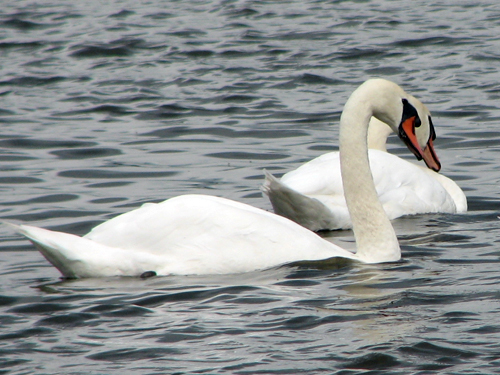Mute Swans are a rather common sight here in the Chicago suburbs. They live on residential lakes, forest preserve wetlands, manicured corporate ponds. They are not native to the American Midwest, however, or even to North America.
Mute Swans are native to north central Eurasia, and we saw them all the time in the Netherlands, when we lived there.

A pair of Mute Swans we saw in the Netherlands in August
Mute Swans living outside of their native range here in North America are likely descended from ornamental escapees. Where breeding populations exist, the large birds may pose a threat to native waterfowl.
Mute Swans are large birds, weighing about 22 lbs as adults. As cygnets they are grey; plumage develops from into nearly overall full white once they reach adulthood. Adults have a bright orange bill, while juveniles have dark bills.
Like the population of native Mute Swans in Europe, some of the Mute Swans here in the United States migrate, while other populations remain year-round. Here in the lower Midwest, Mute Swans remain all year. The same is true for much of the European population, including the birds we saw in the Netherlands.
Mute Swans are not a federally protected species in the United States. Mute Swans were at one time protected federally under the Migratory Bird Treaty Act, but in 2005 they were officially declared non-native by the Department of the Interior.
I’ve had Mute Swans on my mind after speaking with different people about them earlier this week. I was surprised to hear some misconceptions about these large waterfowl, so I wanted to share a short post about them. If you want to learn more about Mute Swans, Cornell’s All About Birds is a wonderful resource.




4 Responses to Some things you might not know about Mute Swans